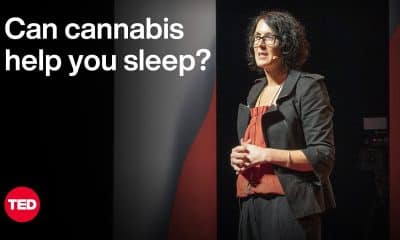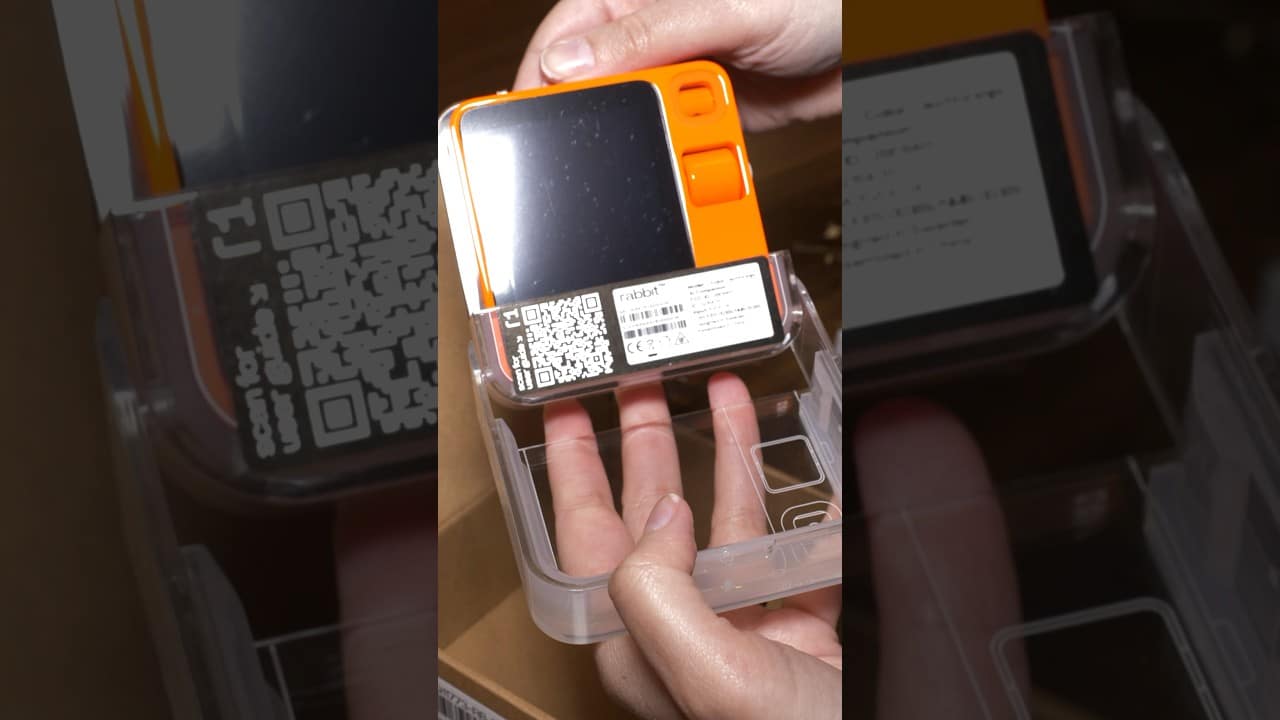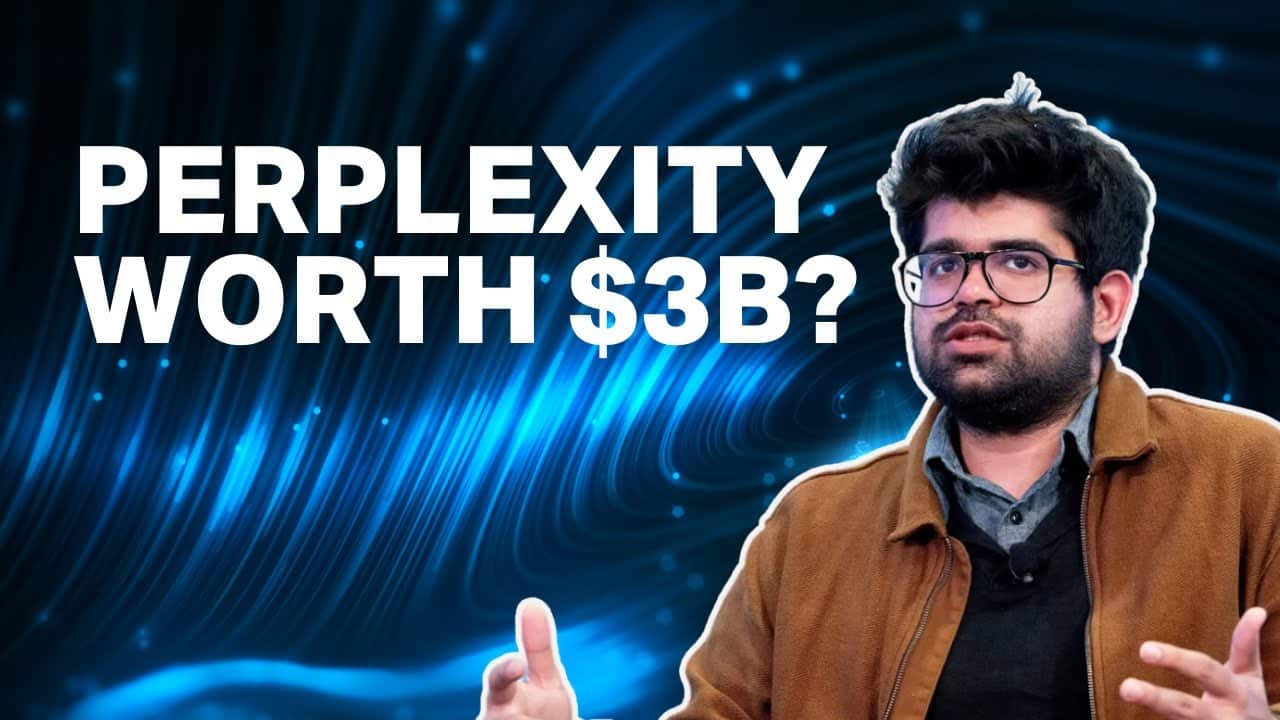Visit to get our entire library of TED Talks, transcripts, translations, personalized talk recommendations and more.
The pandemic forced the world to work together like never before and, with unprecedented speed, bore a new age of health and medical innovation. Physician-scientist Daniel Kraft explains how breakthroughs and advancements like AI-infused antiviral discoveries and laboratory-level diagnostic tools accessible via smartphones are paving the way for a more democratized, connected and data-driven future of medicine and personalized care.
The TED Talks channel features the best talks and performances from the TED Conference, where the world’s leading thinkers and doers give the talk of their lives in 18 minutes (or less). Look for talks on Technology, Entertainment and Design — plus science, business, global issues, the arts and more. You’re welcome to link to or embed these videos, forward them to others and share these ideas with people you know.
Become a TED Member:
Follow TED on Twitter:
Like TED on Facebook:
Subscribe to our channel:
TED’s videos may be used for non-commercial purposes under a Creative Commons License, Attribution–Non Commercial–No Derivatives (or the CC BY – NC – ND 4.0 International) and in accordance with our TED Talks Usage Policy (). For more information on using TED for commercial purposes (e.g. employee learning, in a film or online course), please submit a Media Request at
Transcriber:
As a small child, I was lucky
to be at the launch of Apollo 17,
the last manned mission to the Moon,
and I’ve remained enamored
with space ever since.
And fortunate as a physician
to have contributed
to NASA life sciences research
and to practice aerospace medicine,
inspired by the cross-disciplinary
teamwork required
to tackle audacious challenges
and how space is has often
brought the world together
through the lens of seeing our planet
as one without borders.
Now, just as the historic
Apollo moon landings
were transformational
inflection points in history,
so too is the global
health crisis of COVID-19,
which, despite its many
challenges and tragedies,
like the sinister Cold War setting,
which launched the space race,
can have silver linings.
As Regina Dugan,
former head of DARPA, wrote,
“Sputnik set off the space age,
COVID can spark the health age.”
The silver linings include
the unprecedented acceleration
of innovation, collaboration
and discovery,
catalyzing a future of health and medicine
that can help us reimagine
and bring us a healthier, smarter,
more equitable post-COVID world.
Now, many solutions ride the rails
of rapidly, exponentially
developing technologies
that are rapidly doubling
in their speed-price performance,
as exemplified by Moore’s Law,
which has enabled the billionfold
improvements in memory and computation,
resulting in the ubiquitous
supercomputer smartphones
most of us carry in our pockets.
I still have my now ancient iPhone 2 here.
Still works, which felt
magical 12 years ago
but now feels slow and kludgy.
And I’m sure my iPhone 11
will soon seem antique,
perhaps as its features dissolve
into the rumored to soon arrive
augmented reality smartglasses.
Now exponential technologies
packed into our smart devices
are becoming increasingly medicalized,
with sensors able to detect
an ear infection and more.
So what used to fit on a desktop computer
now fits on our wrist
and these are now entering the domain
of FDA-approved medical devices.
But the future isn’t
about any one technology,
but their convergence
as they get faster, cheaper, better.
In fact, creating entire new fields
at their interfaces,
from computational biology,
robotic surgery,
digiceuticals, telemedicine
to AI-enabled radiology.
And while many industries
have been disrupted
and breached the fourth industrial age,
health and medicine often feel
stuck in the second or third.
Critical data is still stuck being shared
on fax machines, paper forms.
We’re stuck in waiting rooms
waiting for our visits.
I recently had my own echocardiogram
only made available
to share with me on a CD-ROM.
I don’t even own a CD-ROM player anymore.
Tools for managing pandemics in 2020
rely on the same core technologies
used in the pandemic of 1918:
face masks, social distancing,
handwashing.
So part of the challenge
in advancing global, local health
are our models, our mindsets.
We don’t really practice health care.
We practice sick care.
Sick care is based
on intermittent episodic data,
usually only obtained
within the four walls of the clinic
or hospital bed,
and leads to our reactive sick care model,
where we wait for the patient to show up
in the emergency room with a heart attack,
stroke or late-stage cancer
or for the pandemic
to arrive on our shores.
I believe the convergence
of many of the accelerating technologies
and approaches being catalyzed by COVID
will bring us from intermittent sick care
to an age of continuous,
proactive, personalized,
crowdsourced health care
that can increasingly bring care
anytime, anywhere more effectively
and lower costs around the planet.
For example, the convergence
of ever smaller interconnected devices
now riding 5G
is creating not just an Internet of Things
but an Internet of Medical Things.
Much of this convergence
is in the field of digital health,
the ability to connect the dots
between data sources
from personal genomics and medical records
with apps and services
that match the needs
of an individual, patient or caregiver.
And as incentives and reimbursements
align,
COVID has pushed us
to an increasingly virtualized care,
from the hospital to home to our phone
to on and even inside our bodies.
The age of hospital
to home-spital is upon us.
Now, the challenge
of this hyperconnected age
is that we’re creating
exponential amounts of big data
that’s too often siloed in formats
that can’t even talk to each other.
So we need to narrow
that gap between data,
turning that into actual information
for the patient, physician,
public health worker,
and speed its safe and effective use
in the community clinic and bedside.
The pandemic has instigated an immense
amount of international sharing
and collaboration amongst clinicians
and researchers to narrow that gap.
What was learned
in managing patients in Wuhan
and then in the intensive care
units of Italy
has helped New York City hospitals
and their learnings in turn
have spread to centers around the world.
Let’s take a quick dive into some examples
of what’s happening
across the health care paradigm
in the age of COVID
and the implications for the future.
From new forms of data
to help prediction of prevention
to faster diagnostics,
more tailored therapy
and increasingly crowdsourced discovery.
Let’s start with prevention.
Now, while our genomes
impact our health outcomes
and our health spans,
our social determinants of health,
our social, and our day-to-day behaviors
drive most of our risk for disease
and associated costs.
And we now have an explosion of new tools
to help measure and improve
our healthy behaviors.
The first Fitbit only launched in 2009.
Wearables are now ubiquitous
and can measure almost every
element of our physiology,
behavior and even mental health.
And they’re evolving all the way
from disposable tattoos
that can stream vital signs 24/7
to an integration of big data that can —
Even small data from a simple wearable,
tracking the patient discharged home
after a hip replacement
or a coronavirus infection
can determine if the patient
is recovering as expected,
walking more, doing great
or not so great and trigger
early intervention.
We’re evolving from a world
of quantified self
where our digital data
remains silent on our devices
to one of quantified health
where the data can be shared securely
with clinical teams
and researchers
to help optimize prevention,
diagnose disease early
and with feedback loops,
personalize and optimize therapy.
From wristband vitals,
including blood pressure,
now obtainable without a cuff,
and soon sensors that will measure
our blood oxygenation levels
to continuous blood sugar monitoring,
to shock’ables, hearables, ring’ables
that can replace an entire sleep lab
fitting on our finger
to inside’ables, chips beneath our skin,
to track our physiology and lab values,
to even underwear’ables,
Internet of Medical Things
sensors so cheap today
you can get a pack of ten of them,
have one on each pair of your underwear,
now being used to do what’s called
remote patient monitoring
to help detect signs
of respiratory decompensation
of patients with bronchitis or COVID.
Breath’ables are showing promise.
Nanonoses that can detect molecules
in our breath correlating to cancer,
metabolic disease and even
diagnosing infectious disease.
In fact, we now don’t need
to wear anything.
Invisibles, ambient sensing
from AI-enabled cameras
can track her vital signs.
To voice as a biomarker to manage
and detect mental health challenges,
signs of heart disease,
now being able to differentiate
between a cough from a common cold
to that one caused by coronavirus.
And we’ll soon be exuding
our digital exhaust 24/7,
our digitome.
How do we make sense
and truly leverage it?
One path is through crowdsourcing.
The million-participant All of Us trial
from the National Institutes of Health
is doing just that
where data donors, and I’m one,
can contribute our medical records,
genomes and wearable data
to build a much better
and diverse data set,
crossing racial and socioeconomic groups
to help foster better
precision medicine for all of us.
Integrating this information
for the individual and public health
will lead to predictalitics,
our own personal check engine lights
that can give us early proactive warning.
And recent work is demonstrating that
wearables can detect presymptomatically
the onset of the flu,
or, as recently published by Stanford,
in 83 percent of COVID patients
smartwatches can detect
COVID infections early,
often days before onset of symptoms.
Self-reporting websites
like Covid Near You
enable us to locally generate
infections maps,
and combined with our social graphs
and contact tracing apps,
may provide us detailed suggestions
about who we might want to consider
being near or socially distanced from.
What about advancements
in diagnostics and monitoring?
What used to require
a full clinic or laboratory
can now fit into a digital doctor’s bag
or the pocket of a patient.
From COVID quarantine kits
enabling tracking of oxygen saturation,
temperature and lung sounds,
we’re starting to integrate
these into virtual visits,
providing real-time enhancements
of a virtual physical exam.
And the diagnostic tools
are becoming increasingly infused
with AI machine learning,
including consumer ultrasounds,
which can bring diagnostics
anywhere at very low cost,
including the ability
to evaluate the lungs
in suspected COVID patients.
The laboratory has shrunk
to microfluidic platforms
that can be attached to our smartphones
and enable anyone to take measurements
from blood or saliva.
Many of these diagnostics are leveraging
the smartphone and its camera
for a medical selfie.
For example, instead of
taking your urine to the lab
to diagnose a potential
urinary tract infection,
in the privacy of your home
simply dip the urine dipstick,
take a picture with your smartphone camera
and have the results made available
immediately to your doctor and pharmacy.
Similar phone-based apps and approaches
are being used and developed
for fast, frequent,
cheap and easy COVID testing.
Novel approaches to community level
diagnostics are also being explored,
including next gen sequencing of sewage
for early detection of COVID-19,
identifying hotspots and predicted
outbreaks a week or more early.
The explosion of data sources, however,
is really beyond the capacity
of the human mind
to effectively integrate.
We’re now getting help from AI,
or as I call it, IA,
intelligence augmentation.
IA is being leveraged
in reading CT scans to diagnose COVID,
to enhancing the vision
of a gastroenterologist
performing a colonoscopy
to identify lesions
they might have missed.
And AI is playing
an active role in helping identify
and develop new antivirals.
And while AI is often perceived
as a threat by some clinicians,
it can’t replace
the human touch or empathy.
And I don’t think doctors or nurses
will be replaced by AI,
but doctors and health care systems
who’re collaborating with AI in the future
will be replacing those who don’t.
Finally, therapy.
The pandemic has dramatically accelerated
the use of virtual visits.
Telemedicine visits are up on the order
of a thousand percent in many settings.
And I don’t think we’ll ever revert
to pre-COVID levels
as patients and clinicians are discovering
the compelling convenience and efficacy.
Even before virtual zoom
or facetime with the clinician,
asynchronous screening and support
has been provided
by ever-smarter chat bots
that can help discern symptoms
and triage problems
effectively at lower cost.
This includes virtualization
and virtual augmentation
to meet our mental health crisis,
exacerbated by the many
economic and other stressors
which accompany this pandemic.
3D-printing is finding
a role in health care,
with newfound applications
from printing personal masks
to critical parts of ventilators
and being leveraged
by the growing maker movement,
which is playing a major role
in pandemic response,
from making face shields and masks
to improvising do-it-yourself ventilators.
All together, these efforts
are enabling the potential
for democratization of health
and medicine across the planet
and access to information and care
that was previously inaccessible.
Clinical trials are being reshaped,
leveraging smart devices,
cloud-based analytic platforms
and collaborators around the world.
That’s at this convergence
of many rapidly developing
and exponential technologies
that we have the real potential to reshape
and scale health care at our pandemic age.
One where we can dramatically expand
access to basic health care,
increasingly personalized and proactive,
leveraging the scale of digital
platforms and technologies,
enhancing digital connection and empathy,
and the ability to blend
virtual and in-person care,
and leveraging the power of the crowd
to share and build better maps
that guide our individual health
and public health journeys,
and to develop validated
and scaled solutions.
So imagine a new generation of volunteers,
a global health corps
similar to the volunteer paramedics
and firemen of today
that can be upskilled,
use the powerful new tools
to respond early
and collectively to enhance
contact tracing, isolation and quarantine,
and to help identify and address
social and other disparities.
So coming full circle.
Twenty four years after I was
at the launch of Apollo 17,
I found myself as a medical student
on a research clerkship
at Johnson Space Center.
And much to my surprise,
one day in the clinic,
I ran right into Gene Cernan,
the Apollo 17 commander
and the last man to walk on the Moon.
After enthusiastically sharing
my childhood memories of his launch,
he shared one of his famous lines:
“I walked on the Moon. What can’t you do?”
Indeed, what can’t we do
if we work together as one
in the face of this pandemic?
And just as the near tragedy of Apollo 13
rallied NASA to work
creatively and collectively,
so too can this in our pandemic age
lead to our finest hour,
bring on a true health age.
I believe this is possible
if we all get out of our linear mindsets,
take exponential steps
and collaboratively go forth collectively,
not only to solve
the challenges of this pandemic
and predict the
future of health and medicine,
but boldly to go forth together
to accelerate a far better one
for everyone on Spaceship Earth.
Thanks.

 Science & Technology4 years ago
Science & Technology4 years ago
 Wired5 years ago
Wired5 years ago
 CNET4 years ago
CNET4 years ago
 Wired5 years ago
Wired5 years ago
 Wired5 years ago
Wired5 years ago
 Wired5 years ago
Wired5 years ago
 People & Blogs2 years ago
People & Blogs2 years ago
 Wired5 years ago
Wired5 years ago


















D Jackson
June 4, 2021 at 3:32 pm
If medical “professionals” are using the PCR test then I know they’re either arrogant or corrupt. It is not at all designed to test for communicable diseases, especially if ran at over 35 cycles (which conveniently is extremely common if someone wants a false-positive for rona). They been cooking the books since the start in several ways.
For the people that are still trusting these corrupt actors, I just don’t understand what it will take to wake them up.
shad0wrune
June 4, 2021 at 3:40 pm
TLTR
Tyler Gibson
June 4, 2021 at 3:43 pm
And yet if you all are dumb enough to think a cellphone can accurately and consistently diagnose these major illnesses, you all are fools. This sounds great in theory but it is a joke
PreciseDime1
June 4, 2021 at 3:46 pm
Seems more like a glorified grab for a surveillance-state. How much can we really trust medical institutions to uphold doctor-patient confidentiality? Otherwise this will become another slippery slope in the digital age where people’s fundamental rights are stripped away “to improve user experience”.
Lane Atkinson
June 4, 2021 at 4:25 pm
Well, HIPAA is kinda a thing. I work in the medical field, I know just how serious it is when there is a breach of confidentiality.
hans spiele
June 4, 2021 at 3:56 pm
the subtitles are around 10s – 20s infront of the speaker at least in the beginning, i had to turn them off, fix this pls
lovtsovm
June 4, 2021 at 4:13 pm
the dude is a child of garry oldman and phillip de franco lol
ChourPower
June 4, 2021 at 8:19 pm
Lol I was searching to see who else though it looks like Phillip De France!
Justin Griffin
June 4, 2021 at 4:18 pm
Yeah it was a prophetic how Dr Fauci told trump he would suffer a pandemic during his administration, and Bill Gates too, they are so full of ‘knowledge’ those two,..I wish I had invested a fortune into vax companies also…
malak almalahi
June 4, 2021 at 4:54 pm
❤️👍🏻👍🏻👍🏻👍🏻👍🏻👍🏻
Sannidor
June 4, 2021 at 5:06 pm
Lies on top of lies. Tiresome but not unexpected.
Baba Bear de korAkor
June 4, 2021 at 5:18 pm
This is truly fascinating. I had no clue so many people were creating so many cool things.
I really believe in having a team of trained and supported volunteers, in every domain of life (health, farming, data processing, education, construction…) working in pair with a personal and dedicated responsibility to self-betterment
Life Psycle Official
June 6, 2021 at 5:06 pm
I relate to your comment
Greg Gary
June 4, 2021 at 5:22 pm
Awesome tech on display – too bad most is unlikely to ever be available to any but the most privileged on the planet, at least until monetization of health is a thing of the past. The mindsets that need changing are not in waiting rooms.
wendy wu
June 5, 2021 at 9:37 am
innovation
Ralf
June 4, 2021 at 5:47 pm
agenda 21
Joel Heath
June 4, 2021 at 6:21 pm
All of this sounds like an absolute nightmare from a privacy and security standpoint. These are not just problems to hand-waive away and assume they’ll be solved by someone else. The more data that exists about a person, the easier it is to steal it and use it against them. I know this talk is supposed to be inspiring, but it chilled me to the bone.
Eternal Jon
June 5, 2021 at 2:48 am
It just sounds all wrong
Paul Brooks
June 4, 2021 at 7:27 pm
We do IT for healthcare companies and they are so far behind in technology. They often prioritize saving money on core tech over good software and hardware. Make no mistake, these offices are loaded with devices that cost tens or hundreds of thousands of dollar machines, but they won’t spend a few thousand on decent software or hardware.
This problem, however, is exacerbated by companies charging outrageous prices for EMR software and hardware, with simple equipment often being overpriced ludicrously at 2-5x normal pricing for something that may be nothing more than a desktop computer or tablet.
The reality is that there are many problems with healthcare technology that keep people from adopting better solutions, from owners who just want more BMWs to people who think they can use old tech forever and delay upgrades, to those who think computers and infrastructure systems are garbage and only care about the modalities.
To get healthcare to the next level will require adjustments to how billing and pricing is handled as well, which ultimately determines what a healthcare organization can afford. This unfairly benefits cash-only healthcare companies, practices that get good negotiated rates, or practices that are able to see customers who pay their bills on time-if at all.
We desperately need a single payer system with controlled rates and standardized systems on the US.
Melissa0774
June 4, 2021 at 11:44 pm
I wish some visionary billionaire CEO, someone like Jeff Besos, or Elon Musk, for example, would build a brand new teaching hospital from the ground up, somewhere in the U.S. It should be like another St. Jude’s, but for adults. A lot of people hold up places like the Mayo Clinic or St. Jude’s, or the good hospitals in NYC as the examples that everyone else should model themselves after, but those places are starting to show their age and we really need something new. It should be charity based, focus on adults, and be placed in a part of the country that otherwise has lousy options and could use the jobs.
Kaylee Detmer
June 6, 2021 at 5:33 am
Iam studying Healthcare administration and informatics… How do I approach a health IT job with no experience?? Tia.
joe fortino
June 4, 2021 at 7:35 pm
Subtitles would help. This man does not have the voice for speeches.
Lisa Love Ministries
June 4, 2021 at 8:06 pm
1 John 5:3-5💝
“For this is the love of God, that we keep His commandments. And His commandments are not burdensome, (because everyone born of God overcomes the world). And this is the victory that has overcome the world: our faith. Who then overcomes the world? Only he who believes that Jesus is the Son of God”
Damian Zgierz
June 4, 2021 at 8:11 pm
How it was made in a lab. Lab founded by CIA by fake companies. Talk about faucis emails.
Sittininthesun
June 4, 2021 at 8:14 pm
That’s rich. We’ve got “experts” peddling experimental vaccines that STILL aren’t FDA-approved, and the same doctors who tell you not to drink a glass of wine if you’re pregnant assure you your baby is safe.
And then there’s the blood clots, the heart problems, anaphylactic shock, deaths…
Then the same Governors and mayors who told people not to work or travel or visit family, for safety, defending 26 million people traveling from riot to protest to riot mid pandemic. Because feelings.
Oh — and Fauci caught colluding with China to deflect blame.
You need a psych eval if you trust these people.
DDPWE
June 4, 2021 at 8:31 pm
If COVID taught us anything, it’s that we don’t care about the human race. We only care about self. Sure, we’ve learned some things, but not enough to actually IMPLENMENT them. All that ever gets done is talk, talk, talk and more talk. Until something gets done, this talk is just getting old.
The whole system doesn’t want you to be healthy, but well enough that you’re going through the revolving-door of wonderful medical appointments. They need to get paid, why would they care that we get healthy? The less people going to medical appointments, the less money they make. So it’s NOT in their best interest to see that we’re healthy. There’s a reason why, the #1 reason for bad health, diet, is only briefly looked at while ANY medical person goes to school. Unless of course they’re going for something that is based along the lines of our diets(nutritionist etc). We literally have the means to pretty much get rid of and defend against the top diseases, but we still choose to do the exact same thing, but expect a different result. The definition of INSANITY.
KillerTacos
June 4, 2021 at 10:38 pm
That was excellent
Melissa0774
June 4, 2021 at 11:46 pm
I wish some visionary billionaire CEO, similar to Jeff Besos, or Elon Musk, for example, would be really passionate and vocal about the problems with the current American healthcare system, constantly write and talk about it in the media all the time, and build a brand new teaching hospital from the ground up, somewhere in the U.S. It should be like another St. Jude’s, but for adults. A lot of people hold up places like the Mayo Clinic or St. Jude’s, or the good hospitals in NYC as the examples that everyone else should model themselves after, but those places are starting to show their age and we really need something new. It should be charity based, focus on adults, and be placed in a part of the country that otherwise has lousy options and could use the jobs. I think when it comes to healthcare, that it’s one of those things where people don’t really understand what needs to change until they see a concrete example of how it could. They’re just used to doing things the way they always have, so they don’t see the problem. This hypothetical new hospital would make it their mission to change that mentality by showing people the type of care and technology they could have at other facilities, but don’t because of all the burocracy and inefficacies, etc. We need a new model for the 21st century, is basically what I’m trying to say.
Randy James
June 5, 2021 at 12:53 am
Lots of thought-provoking concepts here! Thanks!
Shaun Rankin
June 5, 2021 at 1:25 am
A man made virus will allow an already out of control pharma industry create new “cures” all for a tidy profit. Wake up people, they are lying about everything.
Brad Stephan
June 5, 2021 at 2:19 am
Great stuff! However, it’s all for naught until we reverse the perverse financial incentives 180 degrees, i.e., prevention-based compensation, rather than sickness-based compensation.
Def Ketra
June 5, 2021 at 4:20 am
Dustin Hoffman?
BodyBagSoto
June 5, 2021 at 6:57 am
Truly amazing!
Pedro Trus Mendes
June 5, 2021 at 9:03 am
Fantastic!!!
Gabriel Mr.
June 5, 2021 at 11:12 am
Where… Same corupt medics, same garbage services.. Same beds anf filth
Nathan Ngumi
June 5, 2021 at 1:54 pm
Wow! 👌
bjpcorp
June 5, 2021 at 3:22 pm
Daniel Kraft loves covid because he works with the Common Trust Network to develop COVID compliance technology, lab leaked bioweapon c19 didn’t transform anything, it corrupted the future of medicine and democracy.
Nightblade. Greyswandir
June 6, 2021 at 12:43 pm
I totally changed how we see medicine, now medicine is back to level of trust me or you go to prison like inquisition era.
Veronica De Oliveira
June 6, 2021 at 4:31 pm
Brilliant. I needed this
Neeran Pamheiba Meitei
June 6, 2021 at 5:29 pm
People actually praising such technologies have shallow knowledge about privacy and the vagaries of life. Life as we know is full of ups and downs. And those randomness is what makes is human. Our egos would be humbled when things go wrong. And we make connections when we get sick too. Why are we increasingly trying to make ourselves into a robot without any emotions. Sympathy, empathy are learnt when we are faced with difficulties in life. Let’s stop this crazy movement. I do not support this kind of technology at all.
Fuck Imperialism
June 7, 2021 at 5:49 am
We are still waiting for a future of medicine that includes everybody regardless of their wealth
Bruce Wayne
June 7, 2021 at 3:22 pm
Covid sparked the total lock down of human rights, the world became china’s play toy
Sultan Sultans
June 8, 2021 at 8:32 am
Jubiiii, we are getting robots, total controlled by the one world Goverment!
Sultan Sultans
June 8, 2021 at 8:50 am
Nobody from US walked on the moon
SanDiegoJoey
June 8, 2021 at 11:25 am
This is the coolest stuff ever! How does someone become a part of this? I’d like to participate in research as a volunteer, how can I do that? My daughter is a new Registered Nurse working on her Masters and wants to be a part of this emerging field, how does she do that? And, my wife who has been an RN for 30 years would love to be a part of this and offer her decades of bedside nursing experience.
These TED talks are always awesome and inspiring but they rarely tell a person how they can get involved.